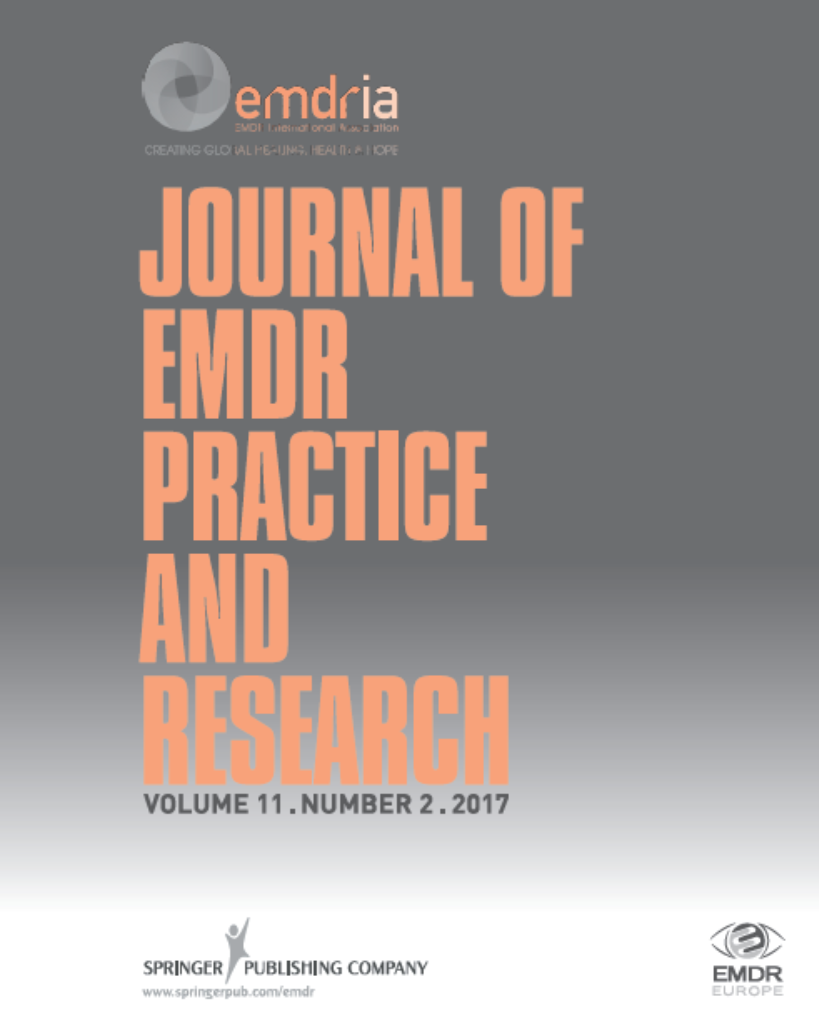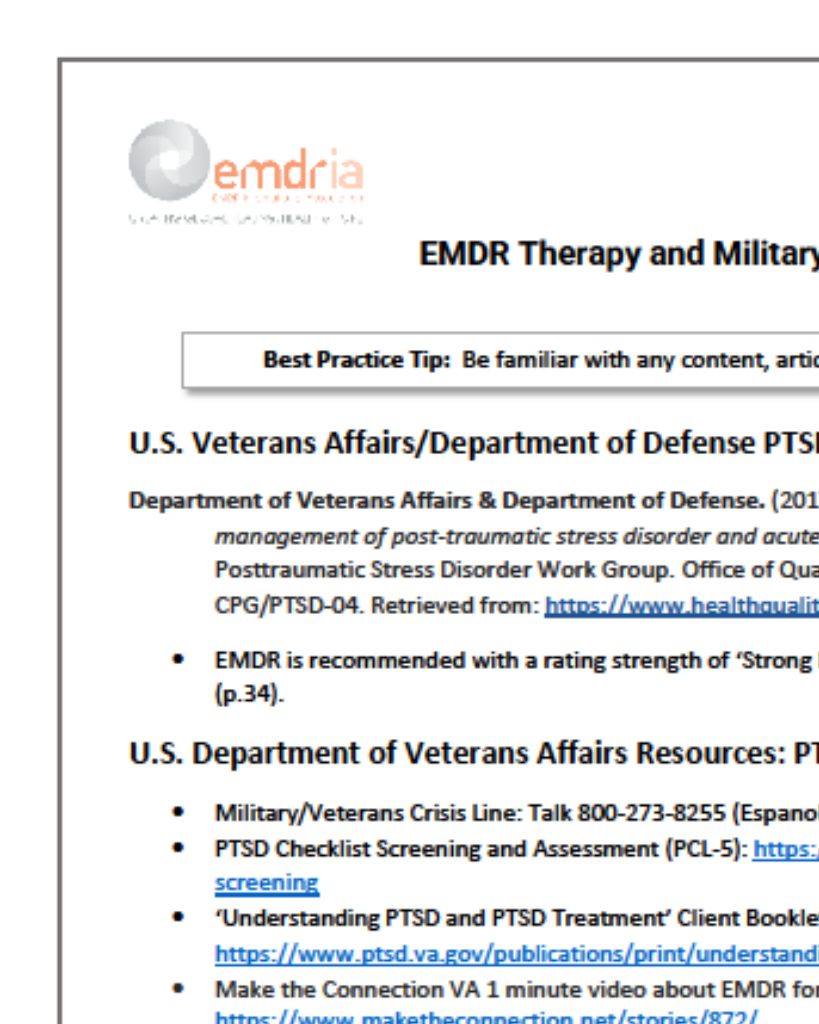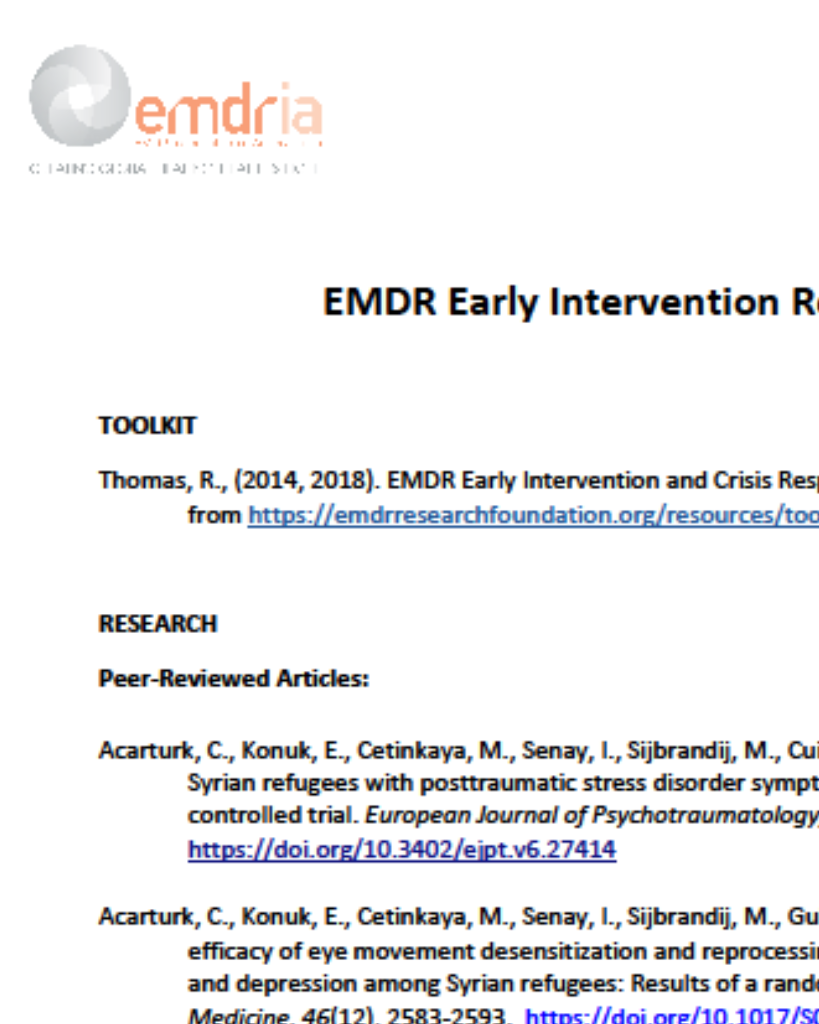EMDR, Community Psychology, and Innovative Applications of a Trauma Recovery Network as a Tool for Social Change
The need and ways to implement novel applications of EMDR interventions (EEIs) at the community level for marginalized groups.
Article Abstract
“This article discusses the need for and ways to implement novel applications of early eye movement desensitization and reprocessing (EMDR) interventions (EEIs) at the community level for marginalized groups. Trauma Recovery Networks (locally based groups of licensed EMDR clinicians volunteering to provide pro bono disaster services, also known as TRNs) are an underused and insufficiently tapped tool when it comes to addressing the sequelae of disasters in our communities. We propose expanding our concept of and work with disasters beyond the traditional, legally recognized definition of Disaster (big D) to include ongoing stressful and traumatic community events or “little d” disasters. By serving those affected by little d disasters, the field of disaster response can be broadened in powerful ways. Marginalized communities typically suffer more and receive fewer services in the wake of traditional Disasters, threatening their civil rights and increasing the allostatic load on their collective health. Attending to the ongoing little d disasters, in these communities can be an important tool for social change, and various proposals for local TRNs are discussed.”
—Description from publisher
Article Access
Open Access
Rosenblum, R. E., Dockstader, D. J., & Martin, S. A. (2017). EMDR, Community Psychology, and Innovative Applications of a Trauma Recovery Network as a Tool for Social Change. Journal of EMDR Practice and Research, 11(4), 206–216. https://doi.org/10.1891/1933-3196.11.4.206
About the Journal
The Journal of EMDR Practice and Research is a peer-reviewed publication devoted to integrative, state-of-the-art papers about Eye Movement Desensitization and Reprocessing. It is a broadly conceived interdisciplinary journal that stimulates and communicates research and theory about EMDR, and their application to clinical practice. The Journal of EMDR Practice and Research is the Official Publication of the EMDR International Association.
Date
December 1, 2017
Creator(s)
Rebecca E. Rosenblum, David J. Dockstader, S. Atyia Martin
Topics
Tragedies
Practice & Methods
EMDR Early Intervention
Extent
11 pages
Publisher
Springer Publishing Company
Rights
Copyright © 2017 EMDR International Association
APA Citation
Rosenblum, R. E., Dockstader, D. J., & Martin, S. A. (2017). EMDR, Community Psychology, and Innovative Applications of a Trauma Recovery Network as a Tool for Social Change. Journal of EMDR Practice and Research, 11(4), 206–216. https://doi.org/10.1891/1933-3196.11.4.206
Series
11
Installment
4
Audience
EMDR Therapists
Language
English
Content Type
Peer-Reviewed
Original Source
Journal of EMDR Practice and Research
Access Type
Open Access





